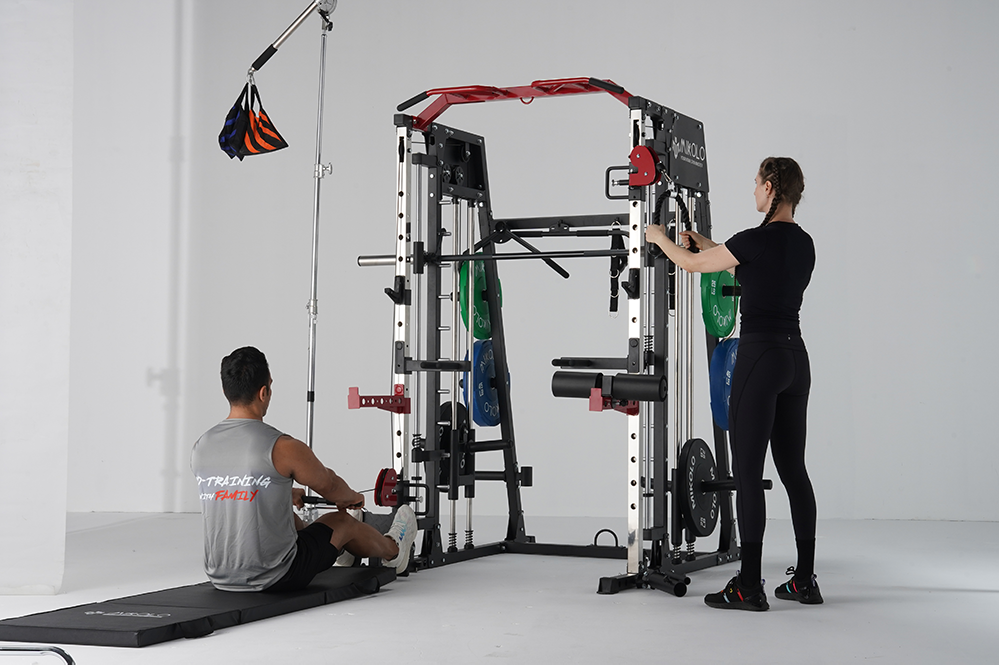When it comes to building strong, powerful legs, few machines are as effective and widely used as the leg press. Whether you're a seasoned lifter or just getting into strength training, understanding the different types of leg presses can help you tailor your workouts more precisely to your fitness goals.
Why the Leg Press Matters
The leg press targets some of the largest and strongest muscles in the body: the quadriceps, glutes, hamstrings, and calves. It’s a compound movement that allows you to load more weight safely than many free weight leg exercises. But not all leg presses are created equal—and choosing the right one can make a big difference in both performance and safety.
1. 45-Degree Leg Press (Inclined Leg Press)
What It Is:
This is one of the most popular and recognizable leg press types found in commercial gyms. You lie at an angle while pushing a weighted sled upward along a fixed track.
Key Features:
-
Sled moves at a 45-degree angle
-
Plates are loaded manually
-
Large footplate for varied stance options
Benefits:
-
Heavy load capacity for strength progression
-
Great quad and glute activation
-
Supports a natural range of motion
Best For:
Bodybuilders, strength athletes, and anyone focused on progressive overload with controlled form.
2. Horizontal Leg Press (Seated Leg Press)
What It Is:
This machine positions the user in an upright seated posture, pushing the footplate straight away from the body rather than upward.
Key Features:
-
Linear push path
-
Typically uses a weight stack
-
Compact and beginner-friendly
Benefits:
-
Easier on the lower back and spine
-
Great for rehab or controlled hypertrophy work
-
Allows quick resistance adjustment
Best For:
Beginners, people recovering from injury, or those training in home gyms with limited space.
3. Vertical Leg Press
What It Is:
In this variation, the user lies flat on their back and presses the weight directly upward, using gravity to add resistance.
Key Features:
-
Vertical push path
-
Smaller footprint than a 45-degree sled
-
More uncommon in commercial gyms
Benefits:
-
Extremely focused on quads and glutes
-
Encourages tight core engagement
-
Minimal equipment complexity
Best For:
Advanced users who want to isolate leg muscles or train with bodyweight-style control. Also ideal for home setups with limited space.
4. Pendulum Leg Press (Arc Motion Press)
What It Is:
A newer design in leg press technology, the pendulum leg press moves the footplate in a natural arc to better align with hip and knee mechanics.
Key Features:
-
Arc-shaped motion mimics natural leg movement
-
Adjustable angles and footplate height
-
Often plate-loaded
Benefits:
-
Reduces joint stress
-
Enhances depth and range of motion
-
Smooth and ergonomic for heavy lifters
Best For:
Lifters seeking joint-friendly yet deep and powerful leg press mechanics.
5. Hack Squat Machines
While technically not a traditional leg press, hack squats are often grouped with them due to similar muscle recruitment and movement pattern.
Key Features:
-
45-degree sled like a leg press, but user stands
-
Shoulder pads and back support
-
Movement simulates a squat
Benefits:
-
Promotes upright torso
-
Targets quads with intensity
-
Encourages good squat form without a barbell
Best For:
Athletes wanting squat benefits without spinal loading.
Choosing the Right Leg Press Type
The right machine for you depends on your:
-
Training goals (mass, rehab, sport performance)
-
Available space and equipment
-
Joint health and mobility needs
-
Comfort and biomechanics
For example, if you're aiming for muscle hypertrophy, the 45-degree or pendulum press allows for serious weight loading and variation. If you're more focused on injury prevention or home workouts, a horizontal or vertical leg press may be more appropriate.
Final Thoughts
There are multiple leg press types, each offering unique advantages. Whether you're chasing size, strength, or simply safer training, understanding the different leg presses helps you make more informed decisions in the gym. Use this guide as a foundation for smarter training—and stronger legs.











































Leave a comment
This site is protected by hCaptcha and the hCaptcha Privacy Policy and Terms of Service apply.